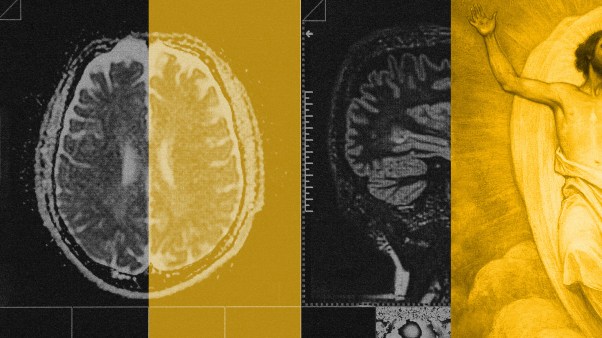Every week that somber gatekeeper of human knowledge and wisdom—the internet—is abuzz with UFO sightings and strange alien encounters, all in an effort to bring the truth that is out there to the rest of us. Although these world-changing images are often more fizzle than flash, they serve as a testament to the fascination people have for the possibility of life that is out of this world.
Popular speculations like these, coupled with pronouncements every few years that scientists have found new evidence of alien life, lead us to believe that we are on the cusp of great discovery.
One of the recent advances making the news and fueling our interest in alien life is the recent discovery of exoplanets in the “Goldilocks,” or habitable, zone. As of this month, out of the 4,118 exoplanets now confirmed, 55 exist in the habitable zone. As new astronomical technology comes online in the next decade, this number is expected to rapidly increase.
As our focus on these extrasolar worlds become sharper, finding life—of any sort—on any one of them becomes more credible with each passing year. As a result, there has been an explosion of interest in a new field of research, astrobiology, the study of alien life and its origins and occurrences in our universe.
But there’s one thing you need to know about astrobiology: it is the only science that has no subject for study. Internet aside, we have no aliens.
This fact hasn’t dissuaded astrobiologists in the least. Instead, what makes astrobiology one of the most interesting fields of study is that it is in some ways a new kind of science—one that links physics with ethics, astronomy with philosophy, and biology with theology in a unique new way.
Some of these links are most apparent when we stop to consider what “life” is. On Earth, we tend to think of life as anything that crawls around. Alien life may be quite different, necessitating a new look on seemingly settled ideas.
The interest in extraterrestrial life is not new. Its origins lie not in the Space Age but in the Iron Age. Starting as early as the fifth century BC, Greek philosophers and mathematicians looked at the movement of the stars and understood there was something out there, even if they did not have the vocabulary to describe it the way modern science does today.
While ancient theories about the universe—such as its composition of earth, air, fire, and water—seem mythological by modern sensibilities, there is one important area of agreement: ancients didn’t imagine the universe as merely a flat Earth as modern people often assume. Instead, they viewed the Earth as one part of a greater universal system, teeming with life.
Who Is My Neighbor?
“As an astrobiologist I’m always asking, ‘Who is my neighbor?’” says Lucas J. Mix, a Harvard astrobiologist and Episcopal priest. “We want to talk about aliens as though there were ‘us’ and ‘them.’ I really think it’s a question of understanding more broadly and more deeply. Who is my neighbor? Astrobiology is part of this process of reaching out and understanding that even familiar life is more alien than we realize—and therefore alien life might be more familiar than we realize.”
It is not just astronomical discoveries such as exoplanets that powers the ongoing astrobiological renaissance. It is the discoveries of life that is occurring right in our own little world.
For example, even as we find ourselves in the 21st century, scientists estimate they still discover on average one new animal species every day. Our own understanding of “the meaning of life” is constantly being adjusted.
Perhaps the most exciting—and cutest—example of these recent life discoveries is the newfound resilience of tardigrades, also known as water bears or moss piglets. First discovered in 1773 by the German pastor Johann August Ephraim, these creatures were known to be hardy, but recent advances in biology show them to be as indestructible as anything on Earth. Or perhaps, the moon, as thousands of little water bears likely survived the crash of Israel’s Beresheet lunar lander in April 2019.
“We are entering a renaissance of life discovery, for a number of reasons,” notes Mix. “We have discovered life a mile down in the earth, and floating in the atmosphere, and in the middle of the desert, and living in nuclear reactors, and surviving in spacecraft. What we’ve discovered is that the same basic kind of life is living in a much richer and broader way than we previously understood.”
It’s as though the palette of life is never exhausted, even here on Earth. Just when we think we understand life and have an it-can’t-get-any-better-than-this moment, we discover something even more amazing than the last. The richer and broader we discover life to be, the richer and broader we discover our Creator to be.
What Are the Odds?
Around every tree, under every rock, and in every Martian lava tube there is new form or variation of life just waiting to be discovered. Discovered by people; already known by God.
Even as we extol God for the fascinating and colorful diversity of life on Earth, are we ready to find life on other worlds? Last month, NASA’s Chief Scientist Jim Green suggested we are close to finding life, perhaps even evidence on Mars, but far from being able to accept it.
If we send a robotic lander to Europa, moon of Jupiter, we may discover evidence of life. Then again, if we send a robotic lander to Europa we may discover no evidence of life. Either way, it has profound implications for what life means for us. The stakes are high. Enter astrobiology—perhaps the only scientific field where philosophy, ethics, and even theology are trying to get ahead of the science.
If we find life out there, the chemistry must suggest it is life, the biology must confirm that it is life, the philosophy must decide if it is life, the ethics must adopt expectations for its life, and theology must consider its relationship to other life. And if we don’t find life out there, the same questions still remain, yet in reverse.
Green’s point is well-taken. This is happening faster than we may be ready for. And surprisingly, the best place we may soon find neighbors may actually be Mars. Yes—life on Mars.
According to Roger Wiens, a scientist at Los Alamos National Laboratory and principle investigator for the Mars Curiosity rover’s ChemCam, terrestrial scientists have already found more than one hundred and fifty Martian rocks on Earth. In times past, when Mars was hit by a meteor, the impact catapulted rocks from the Martian surface into space to take a short 30-million-mile hop, skip, and jump over to our planet. Because life is so abundant on Earth, when large meteors make a similar impact on our planet, any rocks skipping their way to Mars could carry with them bacteria or archaea. These rocks would likely introduce life onto an alien planet—much in the same way we may have accidentally seeded the moon with water bears.
When we ask, “Who is my neighbor?” we may not imagine the Earth-born, Mars-raised kind. Or the Europa born-and-bred kind. What we do know is that our imagination of life on Earth keeps expanding. God wasn’t satisfied with just a few makes and models of species. His creation could have been simple, yet it was engineered for so much more.
We may see alien life as strange—from our human perspective—but from God’s perspective it is just another part of his creation.
Life Redux
The study of what “life” means, and therefore the meaning of life, is an idea recently found in the province of theology and philosophy. But the possibility of life on other worlds stirs the thoughts of astrobiologists, so while biologists study life as it occurs, astrobiologists imagine life, pushing the boundaries of their parent discipline.
Surfing that somber gatekeeper of human knowledge and wisdom—the internet—might lead one to assume that the discovery of life on another world would become its own religion. If we have ET, we can dispense with Jesus. It would only be a matter of time before humanity moved on to something much more … universal.
But what if the opposite is true? Life on other worlds may actually stir our Christian faith. Just as many early biologists such as Ephraim were people of faith, amazed at what our world revealed about God, so too are many astrobiologists today asking the hard questions—not just about what life is but what life could be. Their work will open the lander’s hatch for future generations of Christians to see the signs of God’s created endeavors spread not just across our world but others.
The heavens declare the glory of God. So too do exoplanets and alien life. God’s creation extends not just to the plants and rocks on Earth but to the amino acids and methane waves of alien worlds.
When and if we discover alien life, humans will call it “alien.” Though maybe Christians should call it “our neighbor.” But of course, God will simply call it “good.”
Douglas Estes is associate professor of New Testament and practical theology at South University. He is the editor of Didaktikos, and his latest book is Braving the Future: Christian Faith in a World of Limitless Tech.








